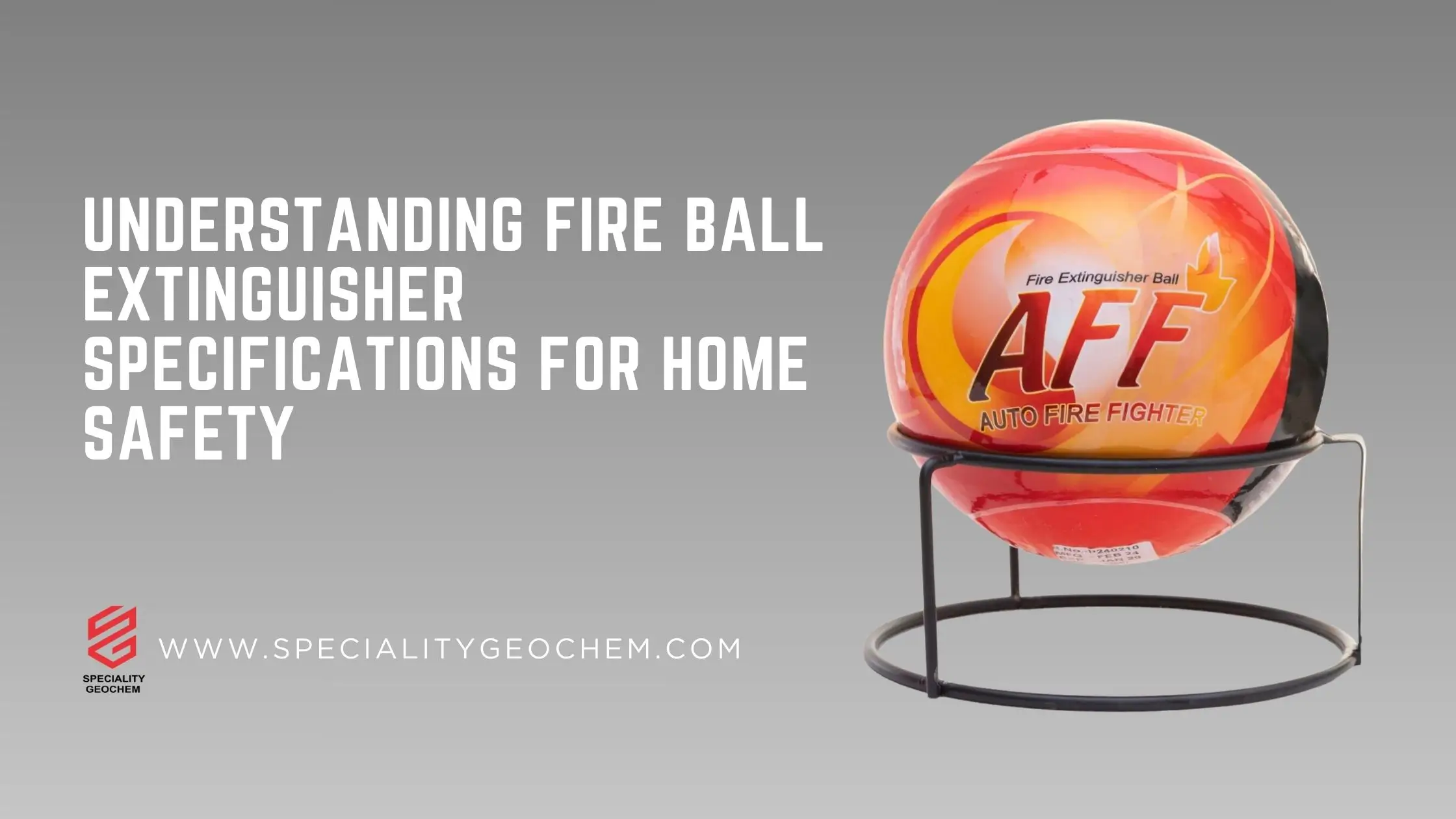Fire Ball Extinguisher Specification: When it comes to protecting your home from fire hazards, having the right equipment can make the difference between a small incident and a devastating loss. One of the most effective innovations in modern fire safety is the fire ball extinguisher—a lightweight, automatic device that activates upon contact with flames. To ensure maximum safety, it’s important to understand fire ball extinguisher specifications, as these determine the device’s efficiency, usability, and suitability for home environments.
In this guide, we will break down the key specifications you should look for, explain how these devices work, and highlight why they are becoming a household necessity.
Why knowing fire ball extinguisher specifications matters
The fire ball extinguisher specification directly affects performance, coverage area, fire suppression time, and the types of fire it can handle. Buying a fire ball extinguisher without understanding its specifications is like purchasing a car without knowing its mileage, engine capacity, or safety features—you might end up with something that doesn’t meet your needs.
By knowing the exact specifications, you can:
- Ensure compatibility with the environment (home, office, kitchen, etc.)
- Guarantee safety for the people handling it
- Understand the product’s effectiveness against different fire classes
- Get better value for your investment
Key fire ball extinguisher specifications to check
1. Weight of the extinguisher ball
Weight plays a crucial role in usability. Most home-friendly fire ball extinguishers weigh between 1.3 kg to 1.5 kg, making them easy to mount, store, or throw toward a fire.
- Lightweight models (around 1.3 kg) are suitable for small kitchens, bedrooms, or electrical panel areas.
- Slightly heavier models (around 1.5 kg) provide greater extinguishing coverage, ideal for larger rooms or home workshops.
2. Diameter and size
The standard size for most fire ball extinguishers ranges from 14 to 15 cm in diameter. A compact size ensures easy installation on walls or ceilings without obstructing space. The smaller the ball, the easier it is to handle, but coverage might be slightly less compared to larger variants.
3. Fire extinguishing agent
The core extinguishing material is often a dry chemical powder, typically mono ammonium phosphate. This agent is highly effective against:
- Class A fires (combustible materials like wood, paper, cloth)
- Class B fires (flammable liquids such as petrol, oil, paint)
- Class C fires (flammable gases like LPG, propane)
This makes it versatile for most household fire scenarios.
4. Activation temperature
Most fire ball extinguishers activate automatically at temperatures between 70°C to 85°C. This means if placed in a high-risk area like a kitchen or electrical room, it will self-activate upon direct exposure to flames, even if no one is present.
5. Activation time
Quick response is critical in fire safety. The best fire ball extinguisher specifications promise activation within 3–10 seconds after contact with flames, ensuring the fire is tackled before it spreads.
6. Coverage area
A quality fire ball extinguisher can cover an area of up to 3–5 cubic meters. For larger spaces, multiple units should be strategically placed to ensure comprehensive protection.
7. Shelf life
Most products have a shelf life of 5 years from the manufacturing date. Always check the expiry date in the specifications to ensure you are buying fresh stock with maximum lifespan.
8. Noise level upon activation
Some models produce a loud sound (around 120 decibels) when they activate. This serves as an alert to nearby individuals, giving them a chance to take further safety measures.
9. Mounting and installation
Fire ball extinguishers are usually supplied with a mounting bracket. Check if the specifications include wall or ceiling mounting options. Proper placement is vital—common spots include kitchens, garages, staircases, and near electrical panels.
10. Compliance and certification
Look for certifications like ISI mark or equivalent safety standard approvals. Certified products have undergone rigorous testing to ensure efficiency and reliability.
Understanding fire ball extinguisher classes and specifications
Fire classes it can handle
Fire ball extinguishers are designed to be multi-purpose. The specification sheet often mentions fire classes, such as:
- Class A: General combustibles
- Class B: Flammable liquids
- Class C: Flammable gases
Some advanced models may also work on electrical fires.
How to read a fire ball extinguisher specification sheet
Key points to check
When you buy a fire ball extinguisher, the specification label usually contains:
- Model name and weight
- Activation time
- Fire agent type
- Coverage area
- Shelf life
- Certifications
Reading and understanding these details ensures you pick the right model for your home safety plan.
Benefits of having a fire ball extinguisher fire ball extinguisher specification at home
- Automatic activation – Works even when no one is around.
- Lightweight and portable – Easy to install or throw into the fire.
- Multi-class protection – Suitable for multiple fire types.
- Maintenance-free – Unlike traditional extinguishers, it requires no refilling during its shelf life.
- Early warning system – Loud activation sound alerts people nearby.
Ideal placement for maximum safety
In the kitchen
Place above the stove or near the LPG cylinder area.
Near electrical panels
Ideal for preventing electrical fires in case of short circuits.
In the garage or workshop
Protects against flammable liquids and welding sparks.
Staircases and hallways
Acts as a barrier point to prevent fire spread between floors.
Maintenance tips based on specifications
Even though fire ball extinguishers require minimal maintenance, follow these tips:
- Check the expiry date annually.
- Ensure the mounting bracket is secure.
- Avoid exposing it to direct sunlight or extreme temperatures outside recommended specifications.
- Keep the area around it free from obstructions.
Fire Ball Extinguisher Specification: Conclusion
When investing in a fire ball extinguisher, knowing the exact fire ball extinguisher specifications helps you choose the right model for your home’s safety needs. From weight and size to activation time and fire class compatibility, every detail matters in ensuring fast, effective fire suppression.
At Speciality Geochem, we provide ISI certified fire ball extinguishers engineered to meet high safety standards, offering optimal protection for homes, offices, and industrial spaces. Our products are designed with precision specifications to deliver reliable performance when it matters most. Protect your loved ones and property—choose Speciality Geochem for trusted fire safety solutions.

